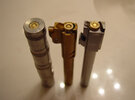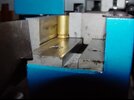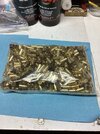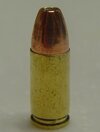Nice photo.
Before I used the Lee undersized, I had always used their standard and mine looked like this. (The cartridges not photos.) And I was a happy camper. No expanding/no flare either.
But I seemed to be getting some pretty easy seating and setback concerned me. That drove me to the undersized die.
When I say easy, I mean I couldn’t feel resistance as the bullet was seated. Not some, none. Again, in a non-expanded case I didn’t like that at all.
Now part of that was likely the Redding competition seater keeping the bullet straight. And probably the slickness of the .355” Extreme plated bullets contributed.
I also wouldn’t be surprised if some of the bullets were a bit undersized. Not sure about the latter but they certainly had an inconsistent ogive as seating depth wasn’t as consistent as it should be.
Ironically perhaps, I was about to be “forced” to go back to the standard sizing and/or expanding.
I just bought some new Berry’s .356” 115gr RN and not only are they larger, they’re apparently less slick with maybe thinner plating. Seem to have same degree of beveling. Try as I might, they would not seat without scraping off the plating even in a chamfered case. Got a few to work, but ruined 8 bullets experimenting. (And I’ve come to be really good at holding a bullet straight without pinching my fingers.)
Don’t see the point in under sizing then expanding back to accept a bullet. Why not start larger, I’m thinking.
Thanks for engaging and lending your expertise.









